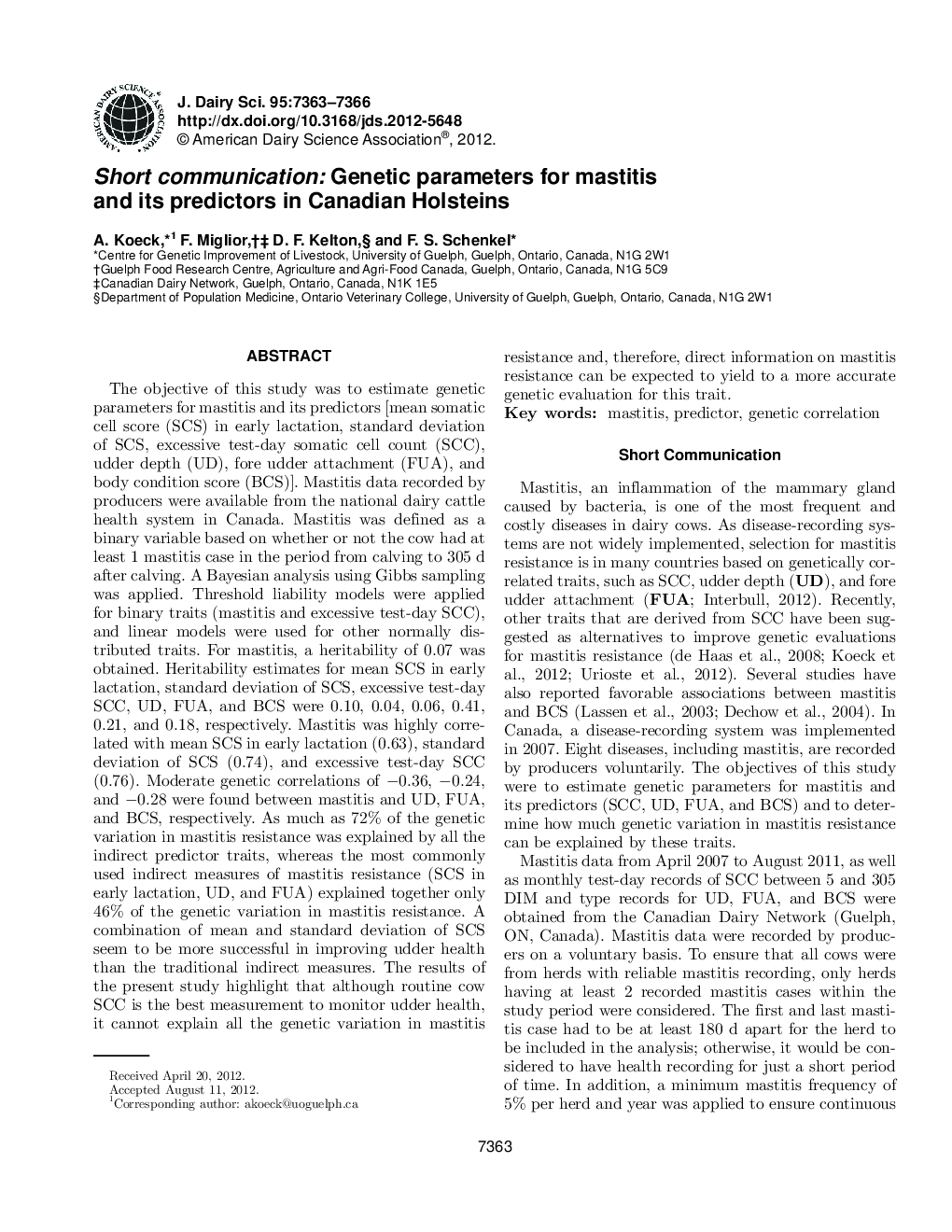| Article ID | Journal | Published Year | Pages | File Type |
|---|---|---|---|---|
| 10978731 | Journal of Dairy Science | 2012 | 4 Pages |
Abstract
The objective of this study was to estimate genetic parameters for mastitis and its predictors [mean somatic cell score (SCS) in early lactation, standard deviation of SCS, excessive test-day somatic cell count (SCC), udder depth (UD), fore udder attachment (FUA), and body condition score (BCS)]. Mastitis data recorded by producers were available from the national dairy cattle health system in Canada. Mastitis was defined as a binary variable based on whether or not the cow had at least 1 mastitis case in the period from calving to 305 d after calving. A Bayesian analysis using Gibbs sampling was applied. Threshold liability models were applied for binary traits (mastitis and excessive test-day SCC), and linear models were used for other normally distributed traits. For mastitis, a heritability of 0.07 was obtained. Heritability estimates for mean SCS in early lactation, standard deviation of SCS, excessive test-day SCC, UD, FUA, and BCS were 0.10, 0.04, 0.06, 0.41, 0.21, and 0.18, respectively. Mastitis was highly correlated with mean SCS in early lactation (0.63), standard deviation of SCS (0.74), and excessive test-day SCC (0.76). Moderate genetic correlations of â0.36, â0.24, and â0.28 were found between mastitis and UD, FUA, and BCS, respectively. As much as 72% of the genetic variation in mastitis resistance was explained by all the indirect predictor traits, whereas the most commonly used indirect measures of mastitis resistance (SCS in early lactation, UD, and FUA) explained together only 46% of the genetic variation in mastitis resistance. A combination of mean and standard deviation of SCS seem to be more successful in improving udder health than the traditional indirect measures. The results of the present study highlight that although routine cow SCC is the best measurement to monitor udder health, it cannot explain all the genetic variation in mastitis resistance and, therefore, direct information on mastitis resistance can be expected to yield to a more accurate genetic evaluation for this trait.
Keywords
Related Topics
Life Sciences
Agricultural and Biological Sciences
Animal Science and Zoology
Authors
A. Koeck, F. Miglior, D.F. Kelton, F.S. Schenkel,
